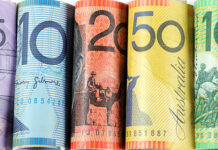Markets
Global core bonds lost ground during Asian and early European dealings yesterday, ignoring the US strong repositioning post Fed on Wednesday. The downward leg bottomed around noon without any obvious reason however. It merely shows investors find it difficult to understand the Fed’s new reaction function. Some guidance came from an unexpected decline in the US manufacturing ISM later though. Core bonds extended gains. US president Trump later announced a new round of tariffs (10%) on the remaining $300 bn worth of Chinese imports, thereby setting the G20 trade truce aside. Core bonds jumped, yields plummeted. The US yield curve slid 12-14 bps! Markets now price in a 96% chance for a back-to-back Fed rate cut in September. The US 10-yr yield (1.88%) is currently trading at its lowest level since November 2016. German yields moves were more modest as they are already at all-time low levels and yet have to respond to the trade news. Yield changes range from flat (2-yr) to -1 bp (10-yr) and are likely to open lower today. Peripheral spreads widened with Italy (+5 bps) underperforming. Today’s July payrolls are in focus. We think that markets’ expectations (165k) should be met which could stabilize (US) yields after yesterday’s steep drop. However, in case of a significant undershoot the odds of more and aggressive Fed easing will rise. More so against the backdrop of recent trade war developments, which Powell said to pay particular attention to. First high-profile US10-yr support situates around 1.77%.
Global markets (including the dollar) showed some remarkable price moves yesterday as they pondered the consequences of the Fed ‘Hawkish Fed rate cut’ on Wednesday. The dollar initially rallied and EUR/USD dropped further to the 1.1030 area. USD/JPY showed a different picture and soon started a protracted intraday downtrend, in line with US yields. Later, the dollar came under further pressure after a disappointing US manufacturing ISM. After the close in Europe, US president Trump announced new tariffs on $ 300 bln Chinese imports. US yields fell off a cliff. Despite Powell’s guarded guidance (not the start of an easing cycle), markets anticipated that the Fed will likely be forced to cut rates further in the very near future. Lower yields and a global risk-off evidently hit USD/JPY hard. The pair closed the day at 107.34, losing about 2 yen from the intraday top. EUR/USD also rebounded further despite the risk-off to close the day at 1.1085. EUR/JPY was also in free-fall (close at 119.00!).
The risk-off repositioning continues in Asia this morning. USD/JPY dropped to the 107 area. Japan fin Min Aso already highlighted the importance exchange rate stability! USD/CNY jumped to the 6.93/94 area! The impact of the risk-off on EUR/USD is less outspoken. The pair stabilizes in the 1.1080 area.
Trade tensions will also dominate (FX) trading in Europe. Trade is an ambiguous topic for EUR/USD. EMU production will stay under pressure in a negative international context. At the same time, markets will see a growing chance of further (aggressive?) Fed rate cuts. Later, FX markets will also keep a close eye at the US payrolls. We have few reasons to take a different view from the consensus (165 K job growth). That said, there is probably an asymmetric risk for the dollar. A weak report will only intensify market speculation on Fed easing. This might weigh on the dollar. So, less than 2 days after the ‘hawkish’ Fed guidance the odds might already turn less positive for the dollar.
The BoE cut its growth forecasts yesterday due to global and Brexit related uncertainty. However, the impact on sterling was limited as the BoE again didn’t give any concrete guidance on its reaction function in case of a no-deal Brexit. Sterling came under pressure overnight. The Conservative party in a regional election lost a seat in Parliament to the Lib Dems, reducing the governments working majority to one. This can complicate Johnsons Brexit strategy, but for now its doesn’t help sterling. A global risk-off context, probably makes sterling even more vulnerable.
News Headlines
US president Trump unexpectedly announced a new round of tariffs on Chinese imports, saying China did not buy US agricultural products as promised. Starting from September 1st, Trump will slap the remaining $300 bn with a 10% levy. The move also comes after physical meetings in Shanghai earlier this week showed no clear progress.













